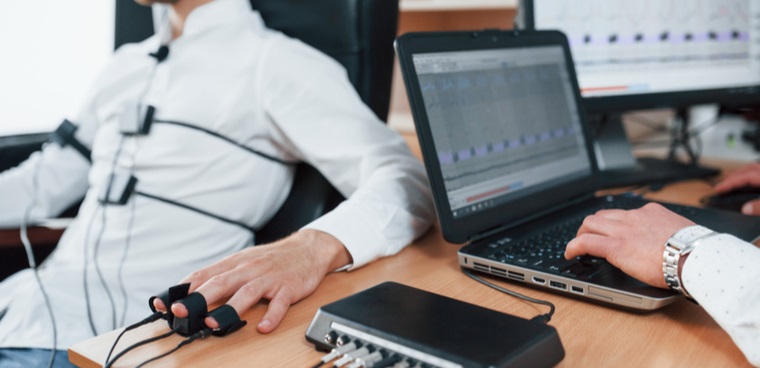Do lie detectors work? Science behind polygraph tests

A lie detector test (or polygraph test) measures and records several physiological indicators, including blood pressure, pulse, respiratory rate, and skin conductivity, while the subject answers questions. Physiological responses associated with deceptive answers are differentiated from those associated with non-deceptive answers by polygraph testing. The scientific validity and reliability of polygraph tests have long been disputed.
A typical polygraph test uses sensors placed on the body to measure several physiological responses:
- Respiration: Measured using pneumographs placed around the chest and abdomen to detect breathing rate and depth.
- Cardiovascular activity: Blood pressure cuff on the arm and a cardiograph detects heart rate.
- Galvanic skin response: Finger plates measure changes in skin conductivity related to sweating.
- Motion: Pins detect minor bodily movements.
During a polygraph test, the subject answers questions while connected to the machine. One set of questions are pertinent questions related to the issue under investigation, such as “Did you steal the money?” You can also ask “Have you ever lied? ” The polygraph examiner then analyzes the physiological responses, looking for significant changes from one question to another. The assumption is that guilty subjects will show greater physiological reactions to the relevant questions about the investigated issue compared to the control questions. However, exactly how these physiological measurements are interpreted about deception remains controversial.
Validity and reliability
Despite their continued use for investigatory purposes, polygraph tests face major scientific criticism about their validity and reliability.
- Susceptibility to countermeasures – Studies show polygraphs beaten by simple physical or mental countermeasures. Deliberately altering breathing patterns, Moving fingers slightly, and mental imagery affect the physiological responses and produce inaccurate results.
- Subjectivity – There is significant individual variability in interpreting polygraph results. There are no standardized criteria for determining what constitutes a lie response leading to inconsistent judgments.
- Lack of scientific validity – The National Research Council noted that the overall scientific evidence for polygraph testing is “scanty and scientifically weak”. The false positive rate is estimated around 20-50% based on meta-analyses.
- Limited Real World Accuracy – In studies reconstructing real crime situations, the accuracy rate of polygraph testing was found to be in the range of 66% to 90% across various settings. However, lab studies overestimate real-world performance.
- Ethical issues – Due to limited accuracy and validity, subjecting suspects to polygraph testing raises ethical and legal issues in criminal investigations.
Despite these limitations, lie detector test results are sometimes permitted as evidence in court cases in the US although their credibility and admissibility remain disputed by legal experts. The Department of Defense also uses polygraph testing for security screening of personnel although the National Research Council concluded that polygraphs are of “questionable value” in this task.









